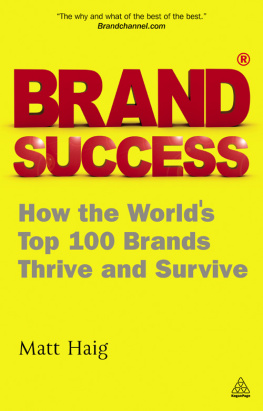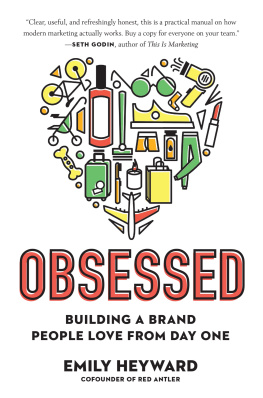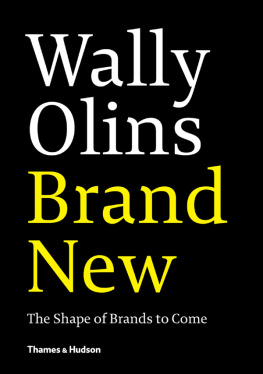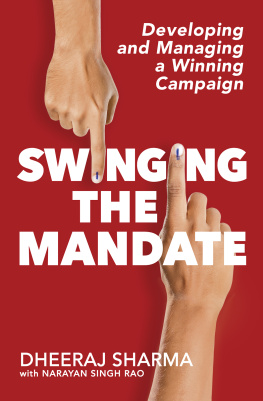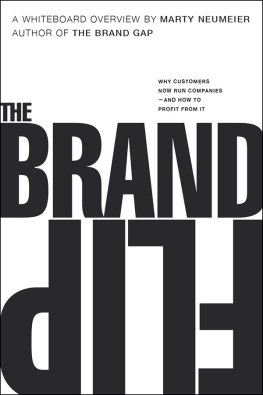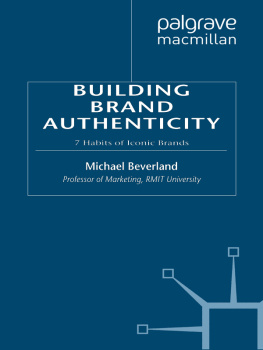BIGGER THAN this
by Fabian Geyrhalter
Copyright 2018 by Fabian Geyrhalter
All rights reserved. No part of this publication may be reproduced, distributed, or transmitted in any form or by any means, including photocopying, recording, or other electronic or mechanical methods, without the prior written permission of the publisher, except in the case of brief quotations embodied in critical reviews and certain other noncommercial uses permitted by copyright law. For permission requests, write to the publisher at the address below.
BRANDTRO PUBLISHING
320 Pine Avenue, Suite 1010
Long Beach, CA 90802
ORDERING INFORMATION:
For details, contact the publisher at the address above or
send an email to
ISBN 978-0-9896461-7-8
Every possible effort has been made to ensure that the information in this book is accurate at the time of first publishing. The editor, publisher or author cannot accept responsibility for damage or loss occasioned to any person acting or refraining from action as a result of the content of this publication.
This book is dedicated to those entrepreneurs who are driven to launch brands rooted in empathy for humanity.
CONTENTS
FOREWORD
by David Glaze, Creative Director, AMAZON
Authenticity. Like storytelling, disruption and the dreaded innovator, authenticity has become one of those buzzwords that gets tossed around with abandon, often vaguely twisted into copy in the hopes of riding a current marketing wave and ultimately blurring its actual meaning. However, like all such overwrought terms, the concept is actually based in an underlying truth...authenticity is indeed a valuable brand attribute, so long as it is, well, authentic. In Bigger Than This, Fabian Geyrhalter quickly moves beyond the clichs, identifying key building blocks of an authentic brand and specific ways to leverage them. In a delightfully concise, rapid-fire read, he makes the case for rediscovering the spark in seemingly mundane commodity products and services. Brands need not be radically new to inspire passion, he argues, but thoughtful and honest in finding, telling and embracing their story.
We all want to believe our favorite brands have a soul. Not so long ago, advertisers had the luxury of telling whatever story they chose with little chance of negative consequences. We were willing to suspend our admittedly less-developed cynicism to embrace brand stories we could relate (or aspire) to. No matter that our corn flakes were mass-produced in enormous factories; there was a nurturing breakfast in every bowl...the box clearly said so. Some cigarettes would make us sexy, others hip or macho. Brands told us what they believed in, and we believed what they told us. Activists or regulators would occasionally burst the brand bubble of a particularly bad actor, but generally we were left to our contented illusions.
Then came the Internet and social media. Suddenly consumers have the ability to share their individual brand experiences and echo those of others. No institution, individual or product is safe from scrutiny. Many once-revered brands have been revealed to be not so much interested in our well-being as their bottom lines, their stories simply fabricated to appeal to a particular target market. Banks, cable companies, food producers, telecoms, insurance companies...the list goes on and on.
At the same time, technological innovation has exploded, challenging us not only with an ongoing deluge of new devices and services but also whole new ways of interacting with each other and the world at large. This flood of information and paradigm shifting can all feel rather sterile and overwhelming, even for digital natives. The soul is missing.
Its no surprise, then, that consumers are embracing brands, both new and old, that convey simplicity, caring and craftsmanship. Its also no surprise that this trend creates an enormous opportunity for commodity products. We inherently understand commodity products: a watch that just tells time, a shoe that just protects feet, a whisky thats just for drinking as is, no explanation needed. And who wouldnt be more interested in reading an engaging founders story than a magazine-thick instruction manual?
The authors genuine enthusiasm for this topic is infectious. Ive known Fabian for almost two decades, since we worked together to bring the car brand Acura to life in the digital world. His passion and optimism for the process of reimagining existing brands and birthing new ones seems to have only grown over the years, along with his considerable expertise. Perhaps most refreshingly, Fabians impatience for marketing fluff and business-speak keeps him focused on sharing insights for action. Bigger Than This is no collection of philosophical musings but rather a guidebook for finding the potential in even the most mundane product or service. Expect your copy to become dog-eared...youre likely to find yourself referencing it again and again.
David Glaze, Creative Director, Amazon
BRANDS IN COSTUMES
About Bigger Than This
It is the Saturday night before Halloween as I start writing this book. Outside of our house, mayhem ensues. It is coordinated and focused mayhem: people are dressed up in costumes that are sexier, creepier and funnier than who they truly are.
Dressing up for Halloween is a great analogy for how many educated consumers see branding: a fake persona is crafted to evoke emotions from a specific audience in order to achieve a predetermined goal. Brands dont often try to scare customers to get their attention as people might on Halloween, but in the end the game of dress-up is at the core of much of the marketing, advertising and branding that exists today. It sounds as calculated as it in fact can be, but fortunately this approach is on its way out. Brands are being forced to leave the costumes to humans during Halloween. Instead they opt for complete transparency and engaging, open conversations because of the rise of social media and the birth of a generation ready to participate, as long as the brands approach is inclusive and amicable. It is a great moment for consumers but a scary one for big brands that are not adapting. The moment presents a huge opportunity for agile startups ready to connect with a large audience in deep ways almost instantaneously.
As I rode my bike down the beach for a weekend ride recently, the song Moving Mountains by Skylar Grey came on my music player. The line
Instead of
moving
mountains,
let the
mountains
move you
| SKYLAR GREY, MOVING MOUNTAINS
got stuck in my head. It occurred to me that the latest wave of brands we love is not leading through disruption and/or innovation. These brands are actually launching with nothing other than a commodity product with nearly instant brand advocates and huge scale to follow. They are not moving mountains by trying to reinvent a product or service (like Uber, the transportation network, does by being clearly innovative) or the experience one has with it (like Drybar, the blow-dry salons, offering a new experience). Instead they launch their brands based on a different kind of uniqueness: an empathetic story. Their tribes are the mountains that move their brands. They let their brands be moved by the people who love them. Its a remarkable strategy, one that is highly inspirational to consumers and hence aspirational to brands. Bigger Than This analyzes brands that are not about
shoes
and
socks
and
watches
and
furniture
and
staplers
even though some actually are but the stories that make them bigger than that, bigger than the commodity product they represent and sell. Im someone who is obsessed with startup innovation, the power of design, enhanced customer experiences and brand-building as a whole. Noticing this quiet trend made me refocus my obsession on brands that dont innovate on a product level yet are still fascinating on a brand level, perhaps even more so than innovators in their space.
Next page

